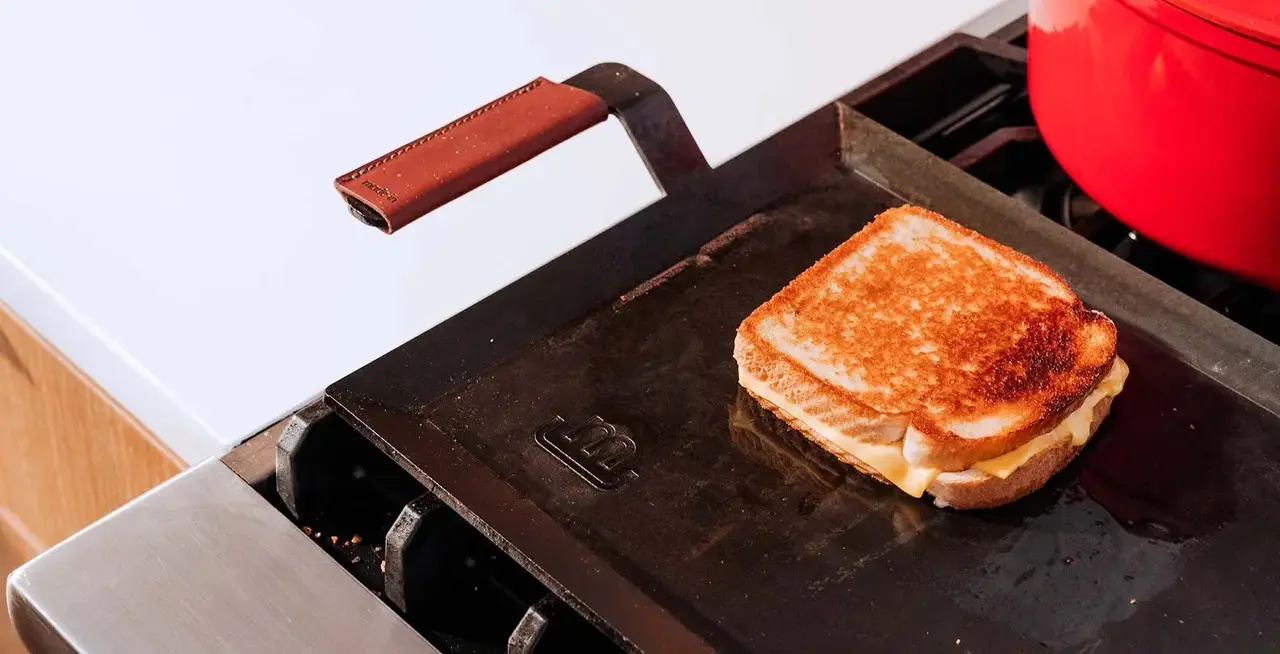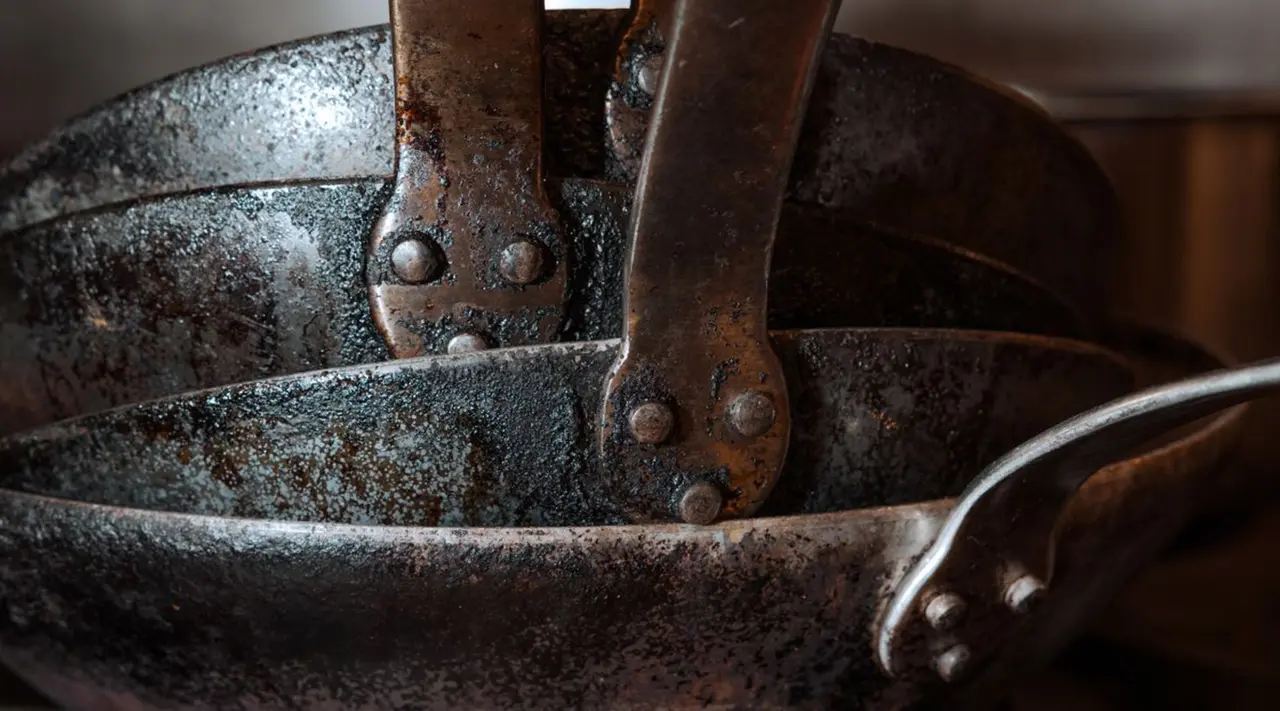Stovetop griddles provide a large cooking surface, perfect for crispy edges on your paninis, fluffy pancakes, and juicy smashburgers. And since carbon steel heats up quickly and evenly, it's an excellent choice for—and the only material we considered—for our Griddle.
To protect yours from rust and keep food from sticking to its surface, you'll need to learn how to season (or re-season) it as part of its regular care and maintenance. Here's how.
Why Do Carbon Steel Griddles Need to Be Seasoned?

Much like cast iron, when carbon steel cookware is bare or unseasoned, it becomes vulnerable to moisture and rust.
Much like cast iron, carbon steel cookware is revered for its ability to develop a naturally non stick patina through building up layers of seasoning. This is beneficial for two reasons—it keeps your ingredients from sticking and protects the raw metal from rusting. Since carbon steel is an iron-rich alloy, it's very prone to rusting when unprotected or bare, so the seasoning process creates a protective coating of oil that seals the surface “pores” of your griddle.
To help you get right to cooking, our Carbon Steel Griddle comes pre-seasoned with the first two layers already applied. That said, it's important to be familiar with how to season your griddle so you can re-season with ease.
How to Season Your Griddle
Thankfully, seasoning your griddle is not a difficult process.
Oven Method
While there are a few different ways to season carbon steel, the oven is the easiest and most effective way to season a large piece of cookware like our Griddle.
To get started, you'll need our Carbon Steel Seasoning Wax or a neutral oil with a high smoke point (we like grapeseed), a sheet pan, aluminum foil, dish soap and a sponge, and paper towels.
1. Preheat Your Oven
Your oven should be preheated to the smoke point of the oil you've selected. Different oils have different smoke points, which is why it's important to confirm that you've set your oven to the right temperature. For grapeseed oil and our seasoning wax, this is 450F.
While your oven preheats, cover your sheet pan in aluminum foil.
2. Scrub Your Griddle
Use dish soap and warm water to clean away any remaining residue on your griddle. Use paper towels to spot check the griddle and confirm that it's actually clean before proceeding to the next step.
3. Dry Your Griddle
After you've removed as much oil as possible, wipe away any moisture on your griddle. Dry it off with a clean dish rag or paper towels, then place it on your stovetop over low heat. The heat of the stove should cause any remaining moisture to evaporate.
4. Add a Coating of Oil
Once your griddle is bone-dry, remove it from the stove and let it cool. Carefully apply a pea-sized amount of oil or Seasoning Wax to your griddle or to a paper towel (we like to pour a little oil in a small bowl for more control). Carefully and evenly cover the griddle surface in a very thin layer of oil or wax.
You don’t need a lot to season, so your griddle should not be dripping with oil—too much or unevenly applied seasoning can cause an uneven non stick surface.
5. Place a Sheet Pan and Your Griddle in the Oven
Place your sheet pan on the bottom rack of the oven. Once the pan is there to catch any stray oil drops, place your griddle in the oven, with the cooking surface facing down. Leave in the oven for one hour.
6. Let It Cook
Once an hour has passed, turn off the oven but leave the griddle in while it cools. When your griddle is completely cooled, it's ready to be used. To kick-start the development of a non stick patina, we recommend cooking fatty proteins like bacon, steak, or burgers for the first couple meals (you're welcome).
While the seasoning process may sound complicated, it's much easier once you've gotten started. Follow the steps above, and soon you’ll be turning out diner-style breakfasts, grilled cheese, and other griddled entrees with ease.
Ready to Cook?
Once your Griddle is seasoned (or re-seasoned) and ready to cook, get started with one of our chef recipes specifically designed for the griddle. From Spanish-style grilled shrimp to fluffy lemon blueberry pancakes, your Griddle can handle it all.































